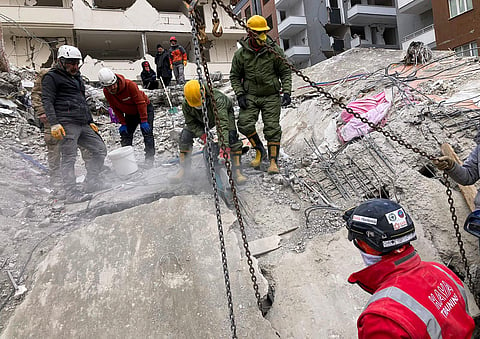

NEW DELHI: While the National Disaster Response Force (NDRF) earned international accolades for its good work in the earthquake hit Turkey, the force headquarters was moving ahead with its preparations to bag the United Nation's “classification”, that would officially qualify it among the top search, rescue and quick response teams of the world.
The sources confirmed that work to get the International Search and Rescue Advisory Group (INSARAG) classification has been going on for some time. “We have been working to get the INSARAG Classification for two heavy teams and the work continues for it involves developing the team as per the standards of the UN Group. It will also require following the Standard Operating Procedures (SOPs),” the sources added.
This process also involves finalising agreements with various ministries and departments including Civil Aviation, and External Affairs of the many. “This will develop an institutional mechanism and memory thus strengthening the whole setup. Also, with time, as the SOPs are set the response time will come down and will lead to saving more lives.”
“The timely and practised response will lead to clarity in action and bring down the morbidity and mortality are positively impacted,” added sources.
The teams are likely to be based in the National Capital Region and Kolkata, to begin with. As per the sources, the Force Levels (Personnel) and Equipment with a heavy team are much more and it can carry out operations at more than one disaster site. As per the classification levels, there are light, medium and heavy teams.
The International Search and Rescue Advisory Group (INSARAG) is a global network of more than 90 countries and organizations under the United Nations umbrella. INSARAG deals with urban search and rescue (USAR) related issues, aiming to establish minimum international standards for USAR teams and methodology for international coordination in earthquake response based on the INSARAG Guidelines endorsed by the United Nations General Assembly Resolution 57/150 of 2002, on “Strengthening the Effectiveness and Coordination of International Urban Search and Rescue Assistance”
This also will have a positive impact on the country’s image and boost the soft power told the sources."Our Government, in agreement with the government of Turkey, extended prompt response and the way teams of the Indian Army and the NDRF have won hearts in Turkey are testimony to our good work. And it is an example of soft power."
Once we get the classification we will be part of the international response mechanism. The primary intention of the INSARAG External Classification (IEC) system is to provide a better understanding of the individual abilities of USAR teams making themselves available for international assistance.
Having teams classified according to a standard will enable disaster-affected countries to prioritise acceptance of international response support from USAR Teams who can add proven value to their national capacity. The IEC is an independent, verifiable, voluntary process that has received unanimous acceptance through INSARAG.
The INSARAG community acknowledges the importance of providing rapid, professional USAR support during disasters that result in structural collapse. To achieve this objective, INSARAG has developed a voluntary, independent peer review process for international USAR teams – the INSARAG External Classification (IEC).
INSARAG has become a model for humanitarian assistance, with more than 90 Member States and organizations. As of today, more than 56 international teams have successfully achieved the globally recognized INSARAG IEC status.
Raised in 2006 as the main disaster response force, the National Disaster Response Force consists of 15 battalions from the BSF, CISF, CRPF, ITBP, SSB and Assam Rifles. Each battalion has 18 self-contained specialist search and rescue teams of 45 personnel including engineers, technicians, electricians, dog squads and medical/paramedics. The total strength of each battalion is 1,149.